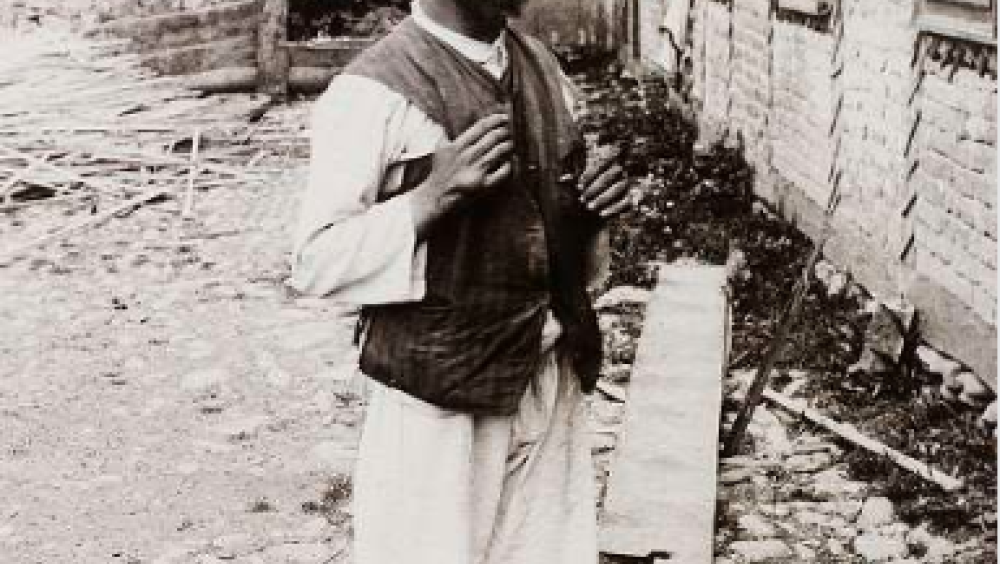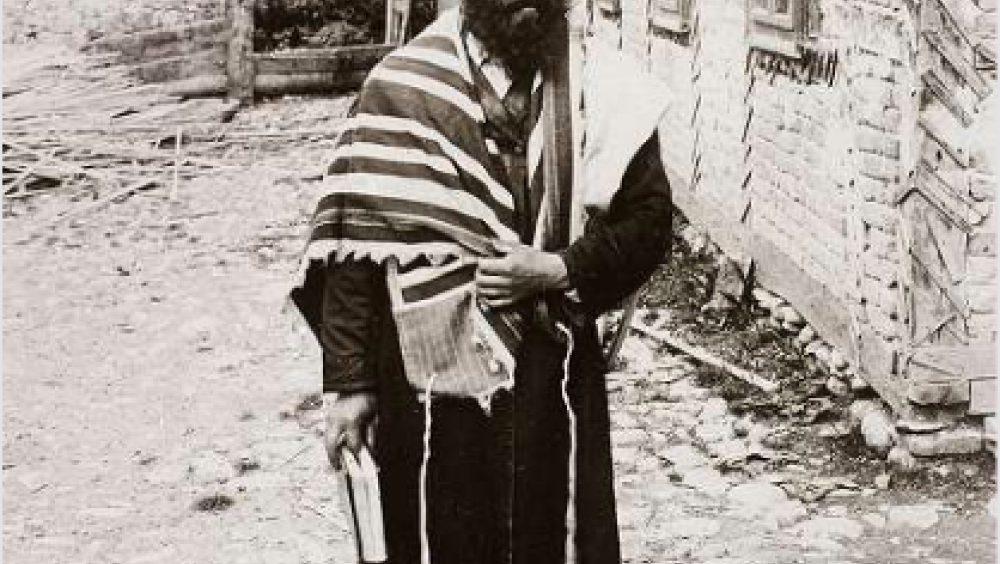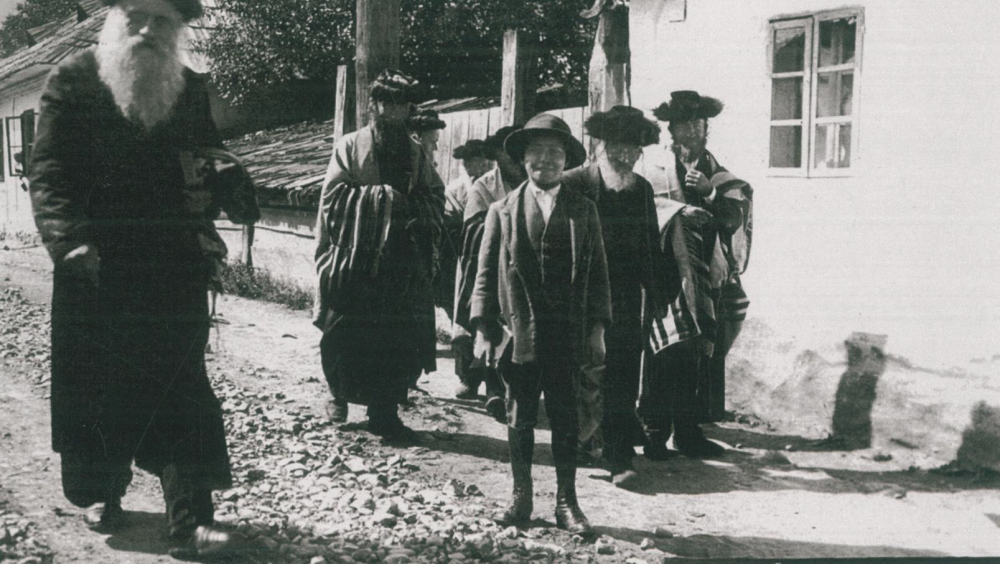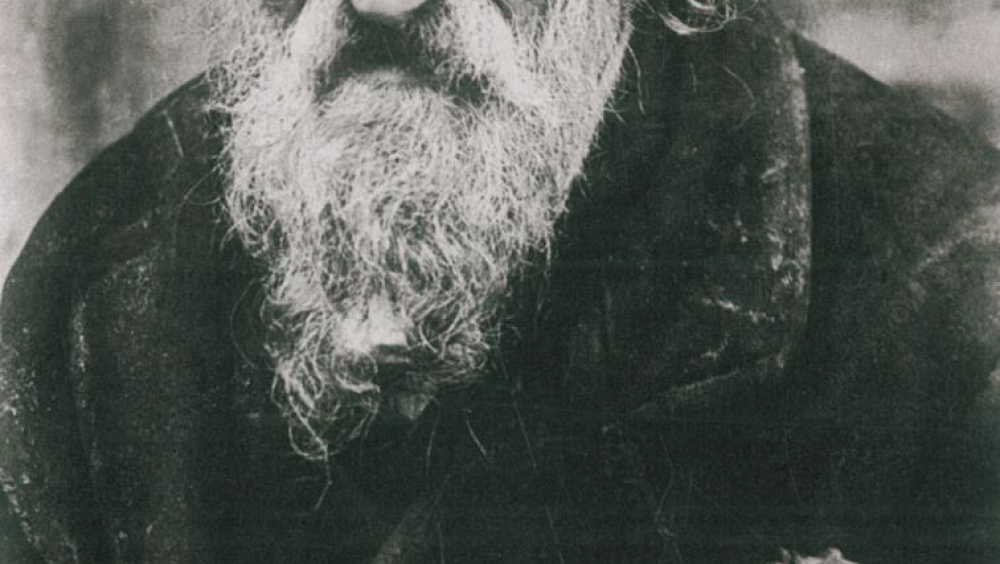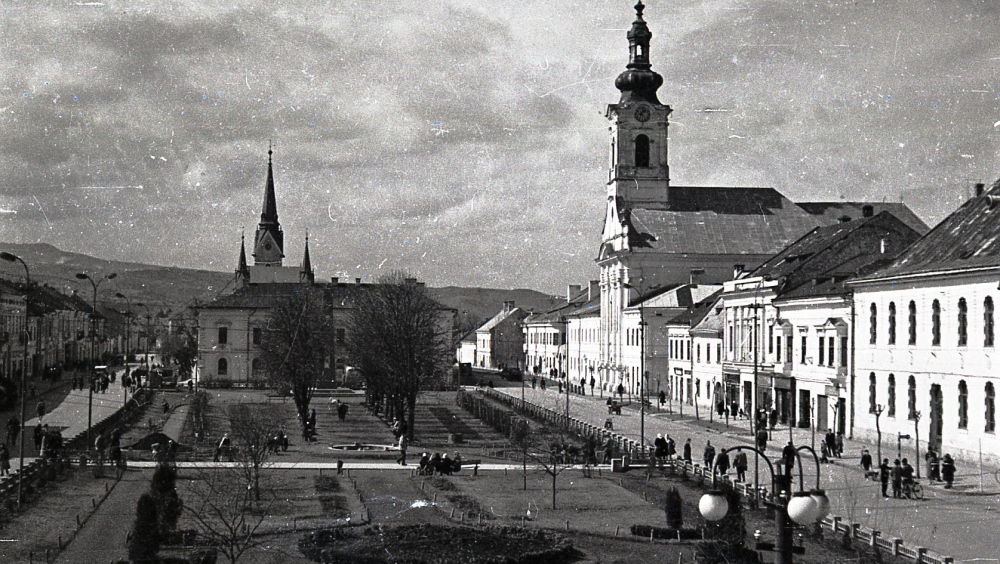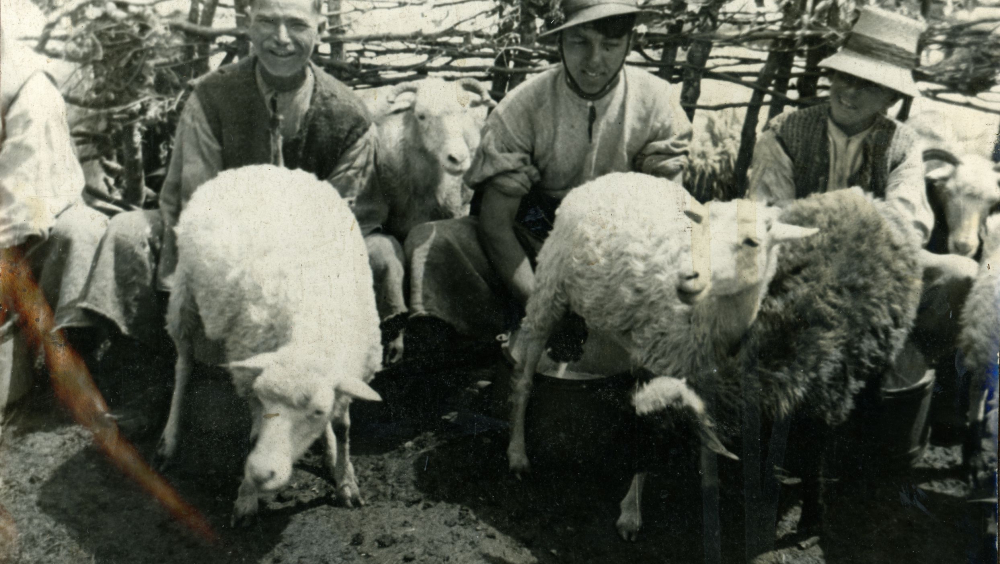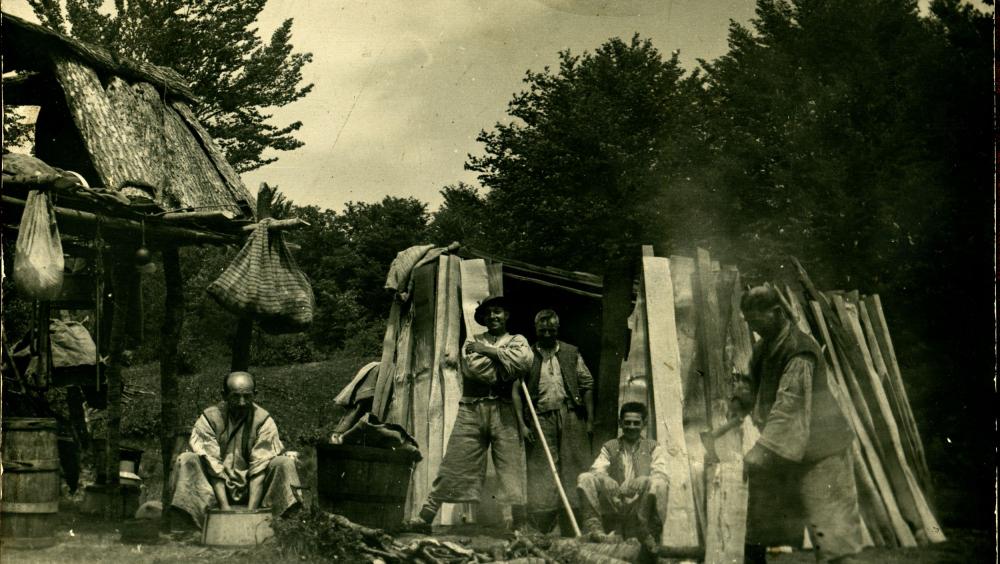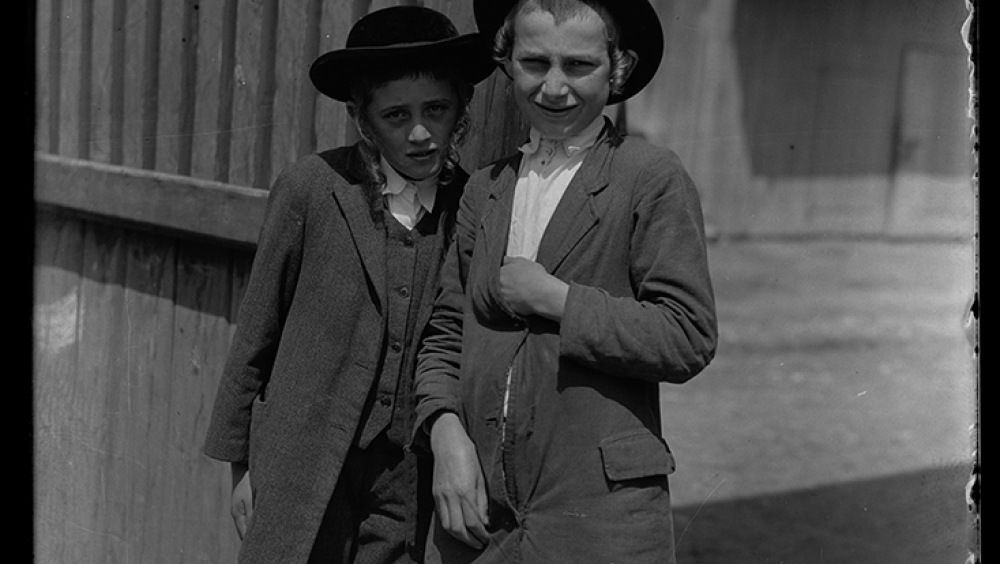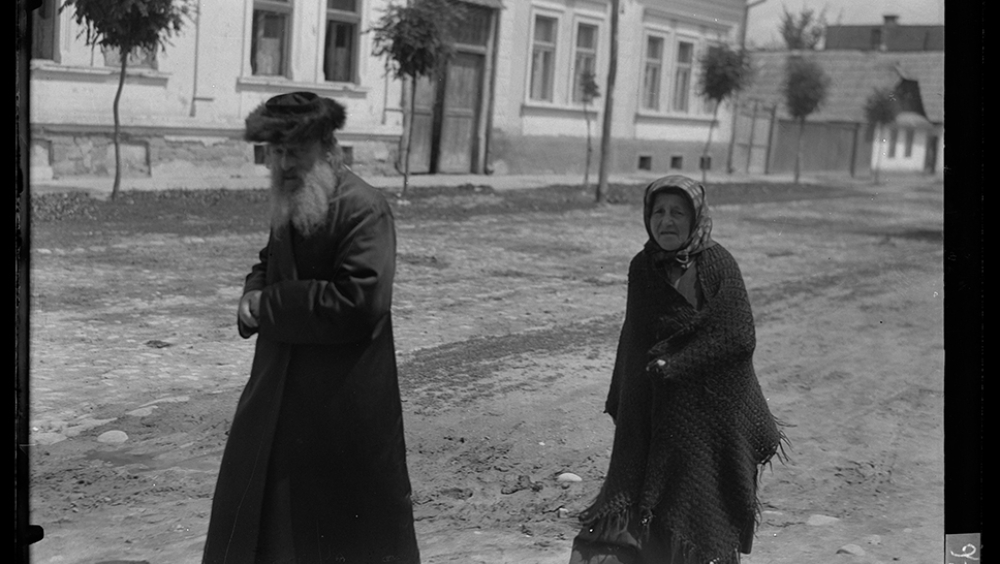Peculiar Maramures. Miracle workers, shepherds and their hasidic masters
Based on a collection of religious books printed in Sighet ,,Miracle workers, shepherds and their Hasidic masters” tells the story of Jewish Maramureșand its peculiarities following the authentic Hasidic centers and various countryside locations, where some of the most famous rabbis, including the leaders of the major Hasidic dynasties of Maramureș lived and experienced a Hasidic way of Jewish life. The Maramureș Jewish Heritage integrated in the local heritage has shaped some unique features determined by the landscape and the social design of the area. A well-known legend relates that the Baal Shem Tov (the founder of the Hasidic movement) himself set foot on the mountains of Maramureș accompanied by his students including Rabbi Yaakov Kopel of Kolomeea. As he saw the scenery of the vastness of Maramuares, the BESHT said, “A beautiful garden Reb Kopel, tend to the garden”.
At the border of a capricious frontier in the very North of Transylvania there is a little charming town called Sighet. The town is surrounded by sleepy volcanic mountains with deep vertical forests and peculiar haystacks that animate the scenery. Before the Second World War Sighet was both a romantic shtetl and also the capital of Maramureș County in the Kingdom of Hungary. Sighet was small yet it was the center of the world. Sighet was crowded and peaceful at the same time. Sighet was safe yet it was part of the most capricious frontier in Europe. It changed nations and languages over centuries from Austrian Empire to Kingdom of Hungary and Romania. Its Heritage was marked by all these elements. Some of these elements are present today only through their absence. Names of quarters or buildings or funny words in a local language remind us of a lost world. Sighet still vibrates in the hearts of people that were ripped off of their lives during the events of the Second World War. A significant Jewish population in the town can be traced to the early 18th century, when hundreds of Jews were already living here. Over the course of the 19th century, the Jewish population of Sighet grew, reaching roughly 10,500 Jews and 38% of the town's population at the beginning of World War II. Sighet is well known as the birthplace of Elie Wiesel (1928-2016), Holocaust survivor and author of Night. Wiesel, his family, and the rest of the Jews of Sighet and Maramureș were deported to Auschwitz in May 1944. Nowadays we honor, commemorate and remember. Our life, and the space we live the present lives is full of history and personal stories. This was a Jewish house we often hear. And we cannot wonder what this means. It means the people, the spokenlanguage, the prayers and the joy. It is the story.Inside the walls.The story in our memory.It’s a Heritage we cannot ignore. This heritage that has become famous for its three dimensions:Jewish Sighet as a printing center for newspapers and religious books where printshops published hundreds of Jewish religious books, written both by local and foreign rabbis. Sighet was so special at that time that Rabbis around the world would order their books to be printed especially in Sighet. Then Sighet as the center of scholars, scribes, learned people and Hassidim. Sighet was the heart of all the Hasidic wisdom. But Rabbis were so concerned of the wellbeing of their communities that they happily established their courts all over the villages of Maramures. And stories about Rabbis who never laughed, their Yeshivas in the mountains and their hot baths and rabbis whose miraculous powers cured people without studying medicine or Rabbis who practiced self-mortification and ecstatic prayers are still making fervor around the world. In the 1930 s one ethnographer made a study in the Maramures Carpathians and he was surprised to find there a peculiar ethnographic phenomenon. He mentioned in one of his articles that all the cheese from Maramures was kosher. What this actually meant was that there was indeed a phenomenon that the Jewish population from the countryside engaged in the dairy industry and there were dozens of sheepfolds in the Carpathians from Maramures run by Jewish supervisors who would attest that the cheese was good for consumption. This was indeed a phenomenon that became legendaryin the social landscape of the area. Our story is no special and the most special of all the stories. Because its ours. And we treasure it as it if it is the last story to tell. We owe to all the buried and unburied Jewish women and men who had once walked along the alleys of this little capricious border town, who gave birth and married off children, worked its land and conducted their lives with dignity and respect, until they were summoned to their eternal rest.
The European Heritage is unimaginable without the Jewish dimension. This particular element of the European Heritage offers a relevant platform for expressing important values of the European Heritage.Human rights, democracy and the rule of law can find their expression in the general or and particular case of the Jewish dimension. Our story aims to increase understanding of the shared history of Europe.Being part of an area where Romanians, Jews, Hungarians, Ukrainians, Germans lived together for so many centuries is a valid proof ofthe pan-European nature of the heritage. Our Jewish heritage, the one we are preserving within our commemorations, and cultural events and in our memory contribute to the role or the role of the heritage in the development and promotion of the common values that underpin European integration. Sighet has always been a place of cultural intersection.
